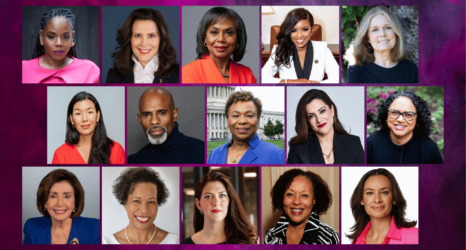We will see a historic ad today during the Super Bowl.
A 60-second ad to end domestic violence, from the “No More” public service campaign, will play for audiences in the midst of the football revelry—just as ads from this campaign have aired during countless regular and postseason games.
But isn’t it time that we gave police brutality and anti-racial-violence the same attention?
We’ve learned that when an issue receives enough attention, advertising can step in and make a difference. Granted, public service announcements are messages themselves, rather than those that promote a product or brand. Yet, in this time of celebrity activism in the face of branded entertainment, would it be such a stretch for brands to step up to support #BlackLivesMatter or counter Islamaphobia?
The entertainment industry has certainly brought uncensored messages that draw attention to events of racial violence and police brutality without worrying about ruining the mood. At the Golden Globes Awards, rapper Common’s speech for his best song award for Selma connected seminal acts of civil disobedience from the 1950s and 1960s to those occurring today. Cast members of Selma wore “I Can’t Breathe” T-shirts to a red carpet premiere of their film in December, and actor Samuel Jackson issued an “ice bucket challenge” version of anti-racist activism, urging celebrities to post videos of themselves singing about “racist police.” Increasingly, celebrities and athletes have found space to talk about race within the entertainment realm, signaling the urgency and importance of improving race relations. Indeed, confronting America’s racism through entertainment can and should happen.
Professional sports is where we’ve seen this happen the most, as Black athletes idolized by millions point out the discrimination toward the general Black population. NBA star Kobe Bryant tweeted, “The system enables young Black men to be killed behind the mask of law.” LeBron James Instagrammed in sympathy with Ferguson as well as Eric Brown, “As a society how do we do better and stop things like this happening time after time!! I’m so sorry to these families.”
Five St. Louis Rams players walked onto the football field with their hands up in solidarity with the #HandsUpWalkOut movement. While their franchise quickly disengaged themselves from this act, the players nonetheless used a large televised platform to signal support for the demonstrators and families of those injured or killed in Ferguson, Missouri. During the warmup for a December basketball game, NBA players LeBron James, Kevin Garnett and others wore T-shirts that read “I Can’t Breathe.” Uncharacteristically, the NBA decided not to fine these players for using the court for political expression. Despite their carefully managed franchises, these professionals and others brought attention to racial inequality during a major televised event, making lasting impressions on fellow players and viewers.
These actions teach us that we don’t have to keep the deep-seated issues of racial politics and violence segregated from sports and entertainment. In fact, putting them at the center of our national conversation is absolutely what we should do in order to begin bringing about change. Based on these actions, it seems altogether plausible that the Super Bowl—the biggest sports entertainment spectacle of the year—could be a stage for similar messages of social justice.
During my years of research and writing about diversity in advertising, I have given much thought to the role advertising—another form of entertainment—can play in addressing racial issues, particularly in advertisements for events like the Super Bowl. At $4.5 million for a 30-second spot, the cost epitomizes what has become commonplace: the inextricable intertwining of sports, commercial interests and impression management. Last year, 111.5 million people watched the Super Bowl, and 5.6 million people sent out 25.3 million tweets over the course of the game. With repeat viewing of Super Bowl ads online, the event will remain one of the year’s most influential media broadcasts.
If celebrities and franchised athletes can take a stand about meaningfully expressing diversity and racial difference, why can’t their advertising? We’ve already seen companies like Proctor and Gamble, Dove and Sport England take on issues such as harmful gender stereotypes and body-image pressure. We’ve been inspired by the camaraderie of men who acknowledge their friend’s disability by playing basketball in wheelchairs before sharing a Guinness together. If we can be so candid about gender and disability, then isn’t it time for companies to do the same for race?
Advertising might not be ready to change this much yet, nor may all of their audiences, as evidence by the initial backlash but ultimate success Cheerios experienced in 2013 for a commercial featuring a mixed-race couple. As an industry, advertising carefully avoids certain types of “controversy,” and tackling issues of body image and disability feel safer than current racial tensions. It may seem naïve to expect advertising to talk about Black lives mattering, and most likely this won’t explicitly happen. Yet if domestic violence can be meaningfully handled, why not race? Even if advertisements featured a wider range of racial and ethnic minorities who didn’t all sound “white,” whose lifestyles were not reduced to stereotypes of white suburbia or Black urbanity, and who more closely reflected the real diversity of the United States, that would be a start.
The Super Bowl ad previews promise a predictable mix of star athletes and celebrities, with an admirable nod to gender violence and disability. But this is not the moment to ignore race, as the numerous outcries against the racial imbalances in the 2015 Academy Award nominees confirm. Given the urgency of the issue and the enormous audiences they reach, advertisers should consider joining athletes, rappers and other celebrities in taking a stand about race and remaining relevant.





